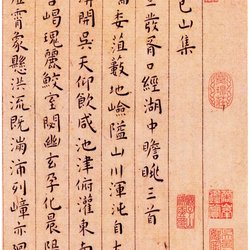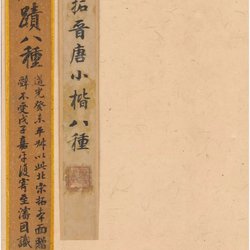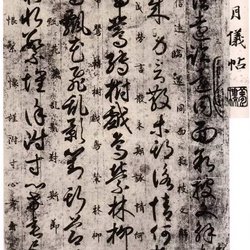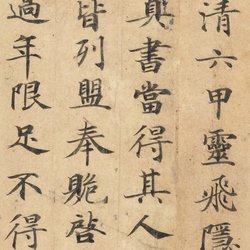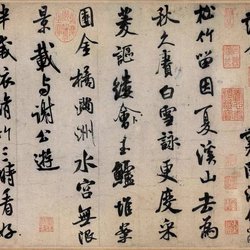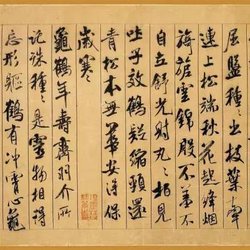"He Jie Biao", also known as "Rong Lu Biao" and "Rong Lu Biao", was written by Zhong Yao when he was 68 years old in the 24th year of Jian'an (219) of the Eastern Han Dynasty. The content is a congratulatory memorial written when he learned the good news that Shu general Guan Yu had been killed. This series of posts best represents the appearance of Zhongshu. "Xuanhe Shupu" says: "The modern standard script of Kaifa is also the official script. Zhong Yao's "He Ke Jie Biao" has all the legal standards and is the ancestor of the official script."
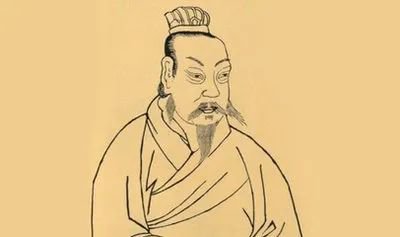
The first person in Chinese regular script: Zhong Yao
As the saying goes, "The passing geese leave their voices, and the passing people leave their names." China has a history of five thousand years, which is not short, but there are not many people who can really leave a mark, because only those truly valuable things can be left behind in the long waves of history and the precipitation of time. Zhong Yao was left in history because of his wonderful calligraphy art.
Zhong Yao was born in the late Eastern Han Dynasty and grew up during the rule of the Cao Wei regime in the Three Kingdoms. At that time, the world was full of heroes vying for hegemony and all industries withered. Especially during the period when Cao Cao threatened the emperor to disobey his subjects, wars broke out frequently, conquests continued, and there were many wars with historical impact. These directly affected the arts, leading to a state of indifference. The literary world at that time was not as good as the Qin and Han Dynasties, and even worse than the Tang and Song Dynasties, but the art of calligraphy was an exception. The most famous calligrapher during this period and the leading figure in the calligraphy world at that time was Zhong Yao, the creator of regular script who was regarded by Ruan Yuan of the Qing Dynasty as the co-originator of the Nantiebei stele.
Zhong Yao was already in a high position in the Cao Wei regime when he learned calligraphy, but his obsession and diligence in calligraphy still amaze the world. To this day, there is still an inkstone-washing pool where Zhong Yao studied in Heping Village, an old town in Changge City. It is said that when Zhong Yao was the Taifu here, after practicing writing every day, he would go to the pool to wash his inkstones and rinse his brushes. As time went by, the water in the pool turned black and seeped into the ground. After digging three feet into the ground, it was still black mud. According to historical records, Zhong Yao said to his son Zhong Hui before his death: "I have been studying calligraphy for thirty years. If I live with people, I will draw a few steps wide, and the paintings will be stretched across the surface. Every time I see thousands of categories, they are all painted. ." In addition to his own efforts, Zhong Yao studied under Cao Xi and Liu Desheng for sixteen years. During the reign of Emperor Huan and Emperor Ling of the Han Dynasty, Liu Desheng "became famous for his running calligraphy. Although he created it with cursive calligraphy, it was rich, beautiful, graceful and graceful, and was unparalleled at that time" ("Shu Duan" by Zhang Huaiguan of the Tang Dynasty). However, Zhang Yanyuan of the Tang Dynasty said in "Calligraphy Essentials": "Cai Yong was passed down by gods and men, and was passed down to Cui Yuan and female Wen Ji. Zhong Yao was passed down to Wen Ji, Mrs. Wei was passed down to Zhong Yao, and Wang Xizhi was passed down to Mrs. Wei. ..." People today no longer know what the historical truth is. The only thing that is clear is that the guidance of famous teachers, decades of hard study and his own understanding have made Zhong Yao a great master.
Because Zhong Yao's main occupation was not calligraphy but being an official, most of his famous works handed down from generation to generation were written in his later years. In the twenty-fourth year of Jian'an, when Zhong Yao was 69 years old, Cao Cao used Sima Yi's plan to unite with Sun Quan to attack Guan Yu. Guan Yu retreated to Maicheng (now southeast of Dangyang, Hubei), broke through to Zhangxiang (now northeast of Dangyang), and was captured and killed. Zhong Yao's book "He Jie Biao" talks about the capture and killing of Guan Yu. The writing style of "He Jie Biao" is strong and majestic without losing the ancient meaning. It is called the "eight-point regular script" or the "ancestor of the formal script". In the second year of Huang Chu of Emperor Wen of Wei Dynasty, when Zhong Yao was 71 years old, he wrote "Jian Ji Zhi Biao". This table's regular script is intertwined with chapter and cursive brushwork, full of ancient interest. It is a rare calligraphy that is rich in ancient methods and meanings. Wang Xizhi's regular script is written with Zhong Biao. The calligraphy is the law, and there are countless kings in later generations. It can be seen that Zhong's regular script has a profound influence on later generations.
"Declaration Table" is Zhong Yao's representative work in regular script. It is unknown when it was written, but judging from the maturity of its regular script style, it should be later than the above two tables. The extant "Announcement Table" is Wang Xizhi's version, with 18 lines in total. Zhang Huaiguan of the Tang Dynasty commented: "Yuan Chang's real calligraphy is peerless, with both hardness and softness. There are many interesting things in the stipples. It can be said to be deep and boundless, and more than quaint. Since the Qin and Han Dynasties, Just one person." Unfortunately, the original work was lost in the Eastern Jin Dynasty. Regarding this, the "Lun Shu" written by Wang Sengqian of the Southern Qi Dynasty has this record: "The deceased great ancestor, Prime Minister, was also very good at regular script. He taught Zhong and Wei as teachers and loved them endlessly. He was in a state of mourning and embarrassment. He still used Zhong Yao's "Shangshu Declaration Post" "Hidden in the belt. After crossing the river, at the right army's place, the right army borrowed Wang Jingren (Wang Xiu). When Jingren died, his mother saw the love of Xiu's life and put her in the coffin." So, what we see today is just that. The Song engraving version in the Palace Museum in Beijing is the best version handed down to this day.
From "He Jie Biao" to "Declaration Form", Zhong Yao's calligraphy art has completed the transformation from official script to regular script, although there is still some flavor of official script in it. "As Zhong Yao's extant regular script work, "Declaration Table" allows us to have a glimpse of the scenery of early regular script. This is the first type of model after the introduction from official script to regular script. The use of square as the body and flat as the function marks the It is regular script rather than official script, which also shows that this kind of regular script evolved from official script and maintains an obvious official flavor. It can be seen that there is an urgent hope for new changes." Liu Shaodian, chairman of the Municipal Calligraphy Association, said, "In Zhong Yao In the past, we did not see the emergence of regular script works in the true sense. Maybe some tablets already have regular script meaning, but the tiny "meaning" is not the same as the mature regular script. The maturity of regular script is A very long process, until the Six Dynasties, Sui and Tang Dynasties, there were countless semi-official and semi-regular scripts in the history of calligraphy that attracted the attention of later generations. Therefore, few people can clearly point out which work should be the symbol of real regular script. We can make generalizations It is pointed out that the period from the Wei and Jin Dynasties to the Six Dynasties is the approximate time from the beginning to maturity of the entire regular script, and in this time chain, Zhong Yao's regular script is the first symbol."
But the significance of Zhong Yao's regular script goes far beyond that. Before Zhong Yao, Chinese characters had evolved from Oracle Bone Script, Zhongding Script, Large Seal Script, Small Seal Script to Official Script. However, these characters all had defects of being difficult to write and read to varying degrees. The emergence of regular script solved the problem of being difficult to read and write. This provides great convenience for the promotion of Chinese characters. Zhong Yao, his status as the originator of regular script and his contribution to Chinese writing cannot be shaken or changed by anyone.
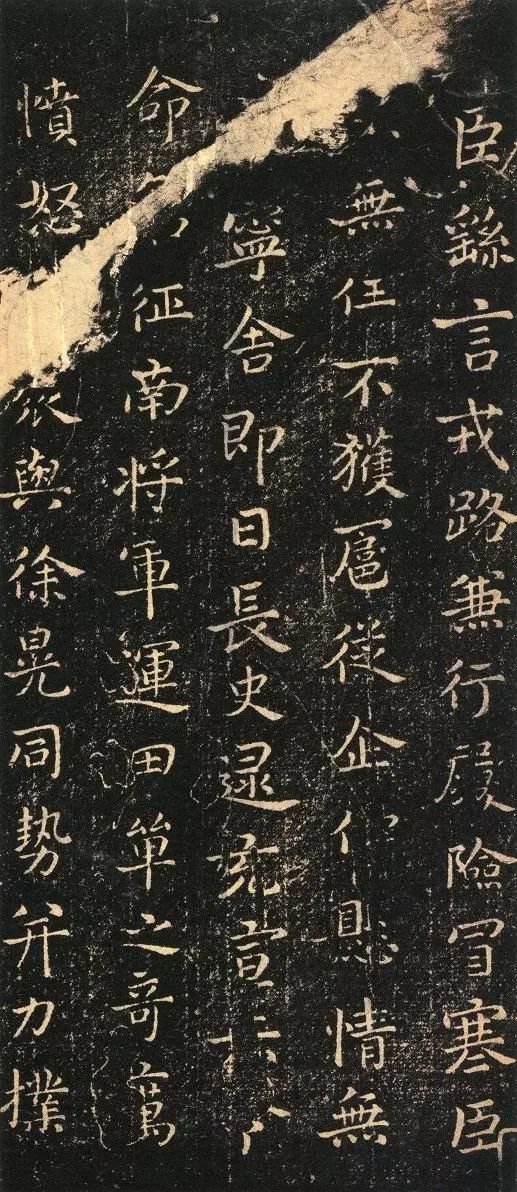
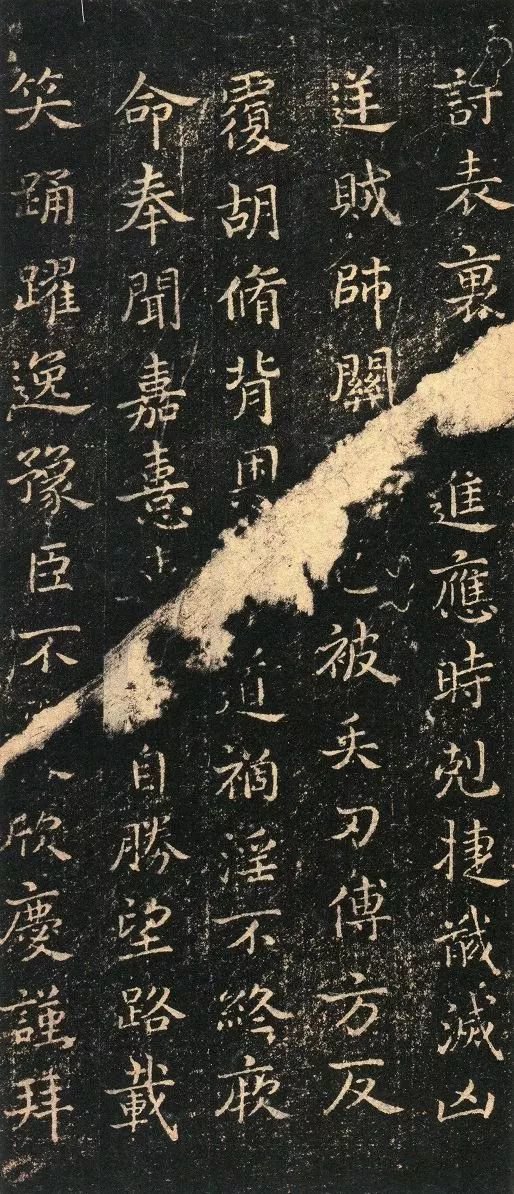
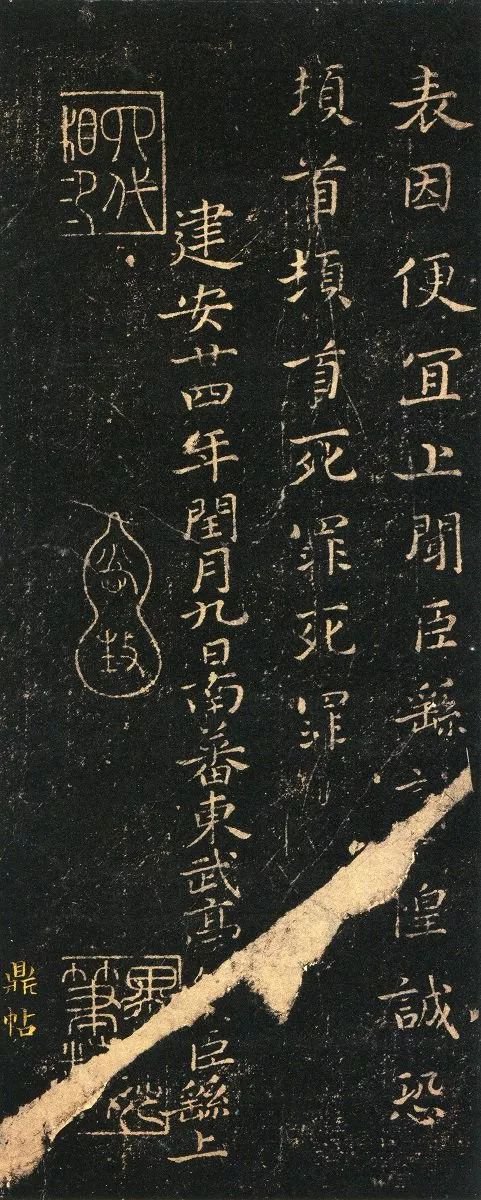
【Explanation】
Chen Yao said: "Traveling on both military and military roads is dangerous and cold." The minister has no responsibility, no followers, and no peace of mind. That day, Chang Shi caught Chong and issued a grand order, ordering General Zhizhi Nan to transport Tian Shanzhi. The angry crowd joined forces with Xu Huang and attacked with all their strength. Advance both internally and externally, win victory when expected, and eliminate evil and rebellion. The thief commander Guan Yu has been killed. Fu Fang repeatedly said that Hu Xiu betrayed his kindness, and the way of heaven brought misfortune and evil, and his fate was not ended. When I heard about Jia Xi, I was overjoyed. Look at the road and smile, be excited and relaxed. I am very happy and happy, and I would like to pay my respects to you because it is cheap. Chen Yao was so frightened that he bowed his head and was punished with death. On the ninth day of the leap month in the twenty-fourth year of Jian'an, Hou Chen Yao of Wuting in the east of Nanbo came to the palace.

